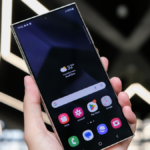The Ongoing Debate: Laptop vs. Phone Purchases
In today’s digital landscape, a lively discussion is unfolding regarding the preference between making purchases on laptops versus smartphones. The crux of the matter is straightforward: while using a smartphone for smaller, everyday transactions is acceptable, larger expenditures—such as travel tickets or household appliances—are better suited for a laptop. This conversation often highlights the differences between Generation Z and Millennials, with older generations advocating for laptop use for significant purchases and younger individuals sharing their achievements, like buying a home on their mobile devices while lounging comfortably.
Your personal experiences may influence your stance on this topic; for instance, the thought of booking a flight through a smartphone might induce anxiety. However, there are compelling arguments in favor of opting for a computer when making substantial acquisitions, and here are some key points to consider.
Advantages of a Larger Display
Regardless of whether your mobile device is a considerable eight-inch model, the primary advantage of using a laptop or desktop for online shopping is the sheer volume of information available. A standard laptop screen, measuring 13 or 15 inches, allows you to view much more content at once compared to a phone. The added display space simplifies the process of comparing prices across multiple browser tabs or locating useful details, such as promotional codes that can enhance your savings.
While preferences differ, individuals who rely on their smartphones for nearly all aspects of life might find it manageable to juggle numerous tabs on a compact screen. Nonetheless, they miss out on the comprehensive view that a larger screen offers. When it comes to significant purchases, having access to more data is undoubtedly advantageous.
The Issues of Friction and Drip Pricing
Retailers would gladly welcome a shift towards mobile shopping because of what can be termed “friction”—the various steps and windows that can slightly hinder the buying process. If you’ve ever found yourself mistakenly purchasing incorrect concert tickets due to a momentary lapse in finger coordination, you understand how critical that friction can be in preventing hasty decisions.
Moreover, when it comes to larger transactions, laptops are more conducive to avoiding pitfalls associated with drip pricing. This strategy involves an initially attractive price that gradually increases as additional charges are added. Consumers often fall into the trap of making suboptimal spending choices due to drip pricing, as they may feel that restarting the purchasing process just isn’t worth the effort once they realize the total has substantially increased. This challenge can be especially pronounced on mobile devices, where it feels daunting to backtrack, and where additional costs may be less visible with each tap.
Concentration Matters
Using a smartphone for transactions can distract users due to the way these devices are typically integrated into daily life. Laptops are often associated with work or academic activities, while phones are utilized more casually, contributing to a tendency for distraction. This distinction can affect our focus levels while making online purchases, which may lead to impulsive buying behavior on mobile devices. The very act of having to get up and access a laptop creates a natural pause before hitting the purchase button, while manipulative design tricks known as “dark patterns”—which encourage excessive spending—tend to have greater efficacy on smartphones.
Ultimately, the best approach to online shopping is one that aligns with your comfort level. If mobile device purchases suit your style, then feel free to proceed with that option, even for significant investments. However, the tangible benefits offered by a larger screen and increased visibility warrant consideration.












